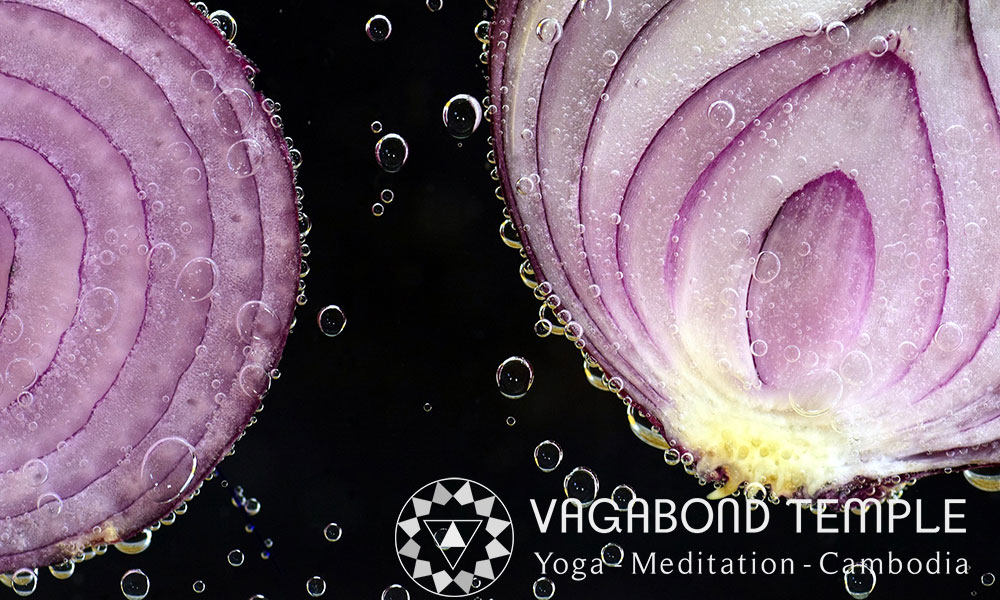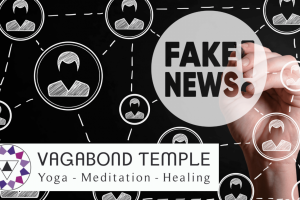Who Am I? Stripping Back The Layers Of Self

When trying to get to grips with life, there are a lot of questions we can ask – the most fundamental one simply being, “Who Am I?”. Sure you have a name, a gender, a place of origin, maybe a career, relationship-status or a million other labels that can define you – but underneath all of that… who really are you? Many people go through life either unwilling or just too busy to explore this question.
The question of “Who Am I” is central to many spiritual traditions which teach us to look inwards – to find the answers to all the mysteries of life by examining the self. In fact it has been said that the best spiritual teachers are those who encourage us to look within and find our own answers rather than swallowing any religious dogma. Yoga is a good example of a tradition that encourages self-reflection – the postures encourage awareness of the bodily sensations and prepare the body for the inward journey. The Buddhist tradition also advocates developing self-awareness through meditation. However it is not just in the Eastern traditions that suggest we turn inward. The same idea can be found in many of the world’s spiritual traditions, for example in the Christian bible we can find the following quote from Jesus:
“Neither shall they say, Lo here! or, lo there! for, behold, the kingdom of God is within you.” Luke 17:21
Western philosophy is also full of thinkers who teach us that the answers lie within, such as Aristotle who said:
“Knowing yourself is the beginning of all wisdom.”
So it seems that there is a real consensus that the question of “Who Am I?” is a crucial one, but how do we investigate it? Different traditions offer different ways of looking at it, and it can all become rather confusing. The Hindus have a “higher-self”, the Buddhists maintain there is no self whatsoever… and if God is inside of me – where is exactly is he hiding?
The Layers of Self
One way to approach the question of “Who Am I?” is to break down the self into separate layers, kind of like the skin of an onion. This type of approach appears in many traditions, a beautiful example of this can be found in the work of the medieval Jewish philosopher Maimonides.
His hugely influential book “The Guide For The Perplexed” was written for those confused by the seemingly irrational content found in the Hebrew Bible. He beautifully explains that such stories are not to be taken literally and, by examining the metaphors used and the intricacy of the language, the deeper meaning can be ascertained. This was intended to make the reader less perplexed – however it may be that after reading this book, you will find yourself even more perplexed as you start to struggle with some of the fundamental questions of life!
Maimonides examines the question of “Who Am I” by describing four areas in which people can attempt to attain perfection. These can be thought of as different layers of the self, with each one taking us deeper.
1) Wealth
This relates to our material wealth, the things we have. A king with many palaces, an army and countless servants would embody this aspect of the self. Today it could be your apartment, job, the car you drive, your phone, or any other possessions. Actually people who have an abundance in this area are seen as role-models in today’s society where the rich are idolised and many try to emulate their lifestyles (often making themselves miserable in the process).
While many strive for perfection in this area, Maimonides points out this is not true perfection. Material possessions are external, they do not change the essence of the person. He is not saying to reject all material possessions and live in a cave, but that we should realise they are something separate from us.
2) The Body
Another aspect of the self is the body. This is certainly closer to us than our material possessions – it is with us for life and cannot be replaced every year like your smartphone! In today’s world there is much focus on striving for perfection in this area with people dieting, exercising, applying cosmetics and even having surgery. Even the world of Yoga is full of people practicing for this reason (which really distorts its meaning).
Maimonides points out that perfection cannot be found here either, viewing the body as a vehicle rather than our true essence. A similar view can be found in many other traditions that teach us that we are far more than just our bodies. This does not mean our body is to be neglected (it is important to take care of our vessel) just that we should be aware that our true self cannot be found here..
3) The Personality
On the face of it, the personality seems like something internal – something very much part of the self. When asking the question, “Who Am I?” it certainly makes sense to look at the personality: we all have opinions, attitudes, ways of behaving and mannerisms, things that make us unique. Again it is possible to strive to be perfect in this area – with people visiting psychologists, reading self-help books and even partaking in spiritual practices to try to be happier, wiser, more successful.
Maimonides illustrates that, although the personality seems like something internal, it really comes from the influence of other people and the environment. The language you speak, the place you grew up, your relationship with your family, your life experiences – all of these events shape who your personality. This conditioned-self is not, according to Maimonides, the deepest self.
It is interesting that the Latin word “persona” means mask – a false outward appearance that can be changed. We can see every day that our personality changes depending on the situation (being at work, with the family, at a party etc.). We all have many different masks – so where is our true essence in all of this?
Maimonides explains that any attempts to perfect the personality will not lead to true perfection. In the same way as you can buy a new car, or change the appearance of your body through exercise, you can adopt a new persona – but this will not change your essence. In the English language we describe somebody as “having” a personality rather than “being” personality – so who is it that has the personality?
4) The Divine
True perfection can only be found here according to Maimonides. Beyond our possessions, bodies, and personalities there is a higher level of intelligence – a kind of pure loving energy that only desires to expand and share. At the beginning of the book, “The Guide For The Perplexed” there is an analysis of the biblical story of creation where God is said to create man “in his own image”. This has caused many to imagine God as a kind of giant bearded man. However reading Maimonides suggests that something may have been lost in translation. He points out that the true meaning is not that God looks like a man, but that God and man share the same divine essence – that the spark of divinity is within us.
These days many people have a problem with the word “God”, however Maimonides is not talking about God as a super-powerful being. He is using the word to attempt to point to something indescribable. It is the same with the word “self” – really it is something beyond words. This is why traditions like Yoga promote awareness-based practices (no amount of reading or philosophising is a substitute for direct experience).
According to Maimonides, the nature of “God” (the divine essence) is giving. The Universe gives us life, it gives us light, it gives us food and water… all of our daily experiences. Somehow without imparting any effort it sustains all of creation. Real perfection is to live in harmony with this force – constantly giving, sharing, creating and expanding – striving toward the infinite.
To see the world this way is to realise that everything is connected. This is also the aim of the Yogic tradition – the word Yoga means “Union” and the purpose of the practice is to dissolve the illusion of separation and experience the oneness of reality. In fact it could be argued that this is the true aim of all spiritual traditions.
Beneath The Layers
So, according to Maimonides, we can strive to acquire more power and possessions, beautify our bodies and perfect our personalities, but none of this will lead to true perfection.
Perhaps the best way to answer the question, “Who Am I?” is to start by asking “Who Am I Not?” This is an idea that can be found in many traditions: we can find our true essence if we strip away all the layers.
According to the work of Maimonides and many other teachers in various traditions, you are not the things you have, the body you inhabit or even your personality. In the physical world we inhabit, everything changes and nothing will last forever – so there is no possibility of finding perfection. However spiritual traditions teach us that behind the appearances there is something else. It is not that we should reject the ordinary world – more like we should recognise its limitations and strive for something greater.
To wake up to your true essence is the real goal of spiritual development, and it starts with the simple question, “Who Am I?”



